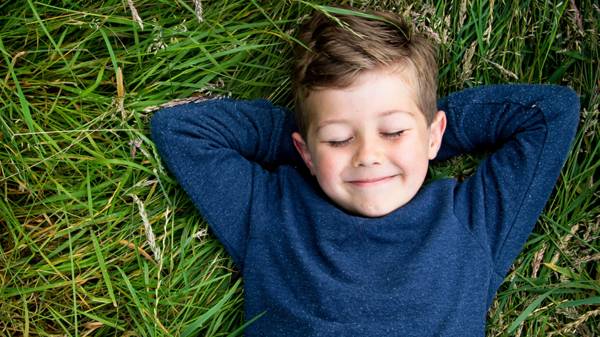Stress doesn’t depend on age. That’s why our children may also be stressed even before they are born. During childhood, triggers are often circumstances that, while adults may seem un important to them, are a real challenge. Hence the importance of fostering a relaxed childhood to ensure an adult. life without anxieties.
The separation of parents on the way to school, a rebuke of the teacher, a fight with friends at recess, a punishment for not eating what is on the plate or sleeping alone, are these small problems that the child has to solve daily. based on available resources, which are still scarce. Younger people have not yet achieved mature development enough to cope with this stress.
- Michel Odent.
- A well-known French obstetrician.
- Has spent most of his life studying how pregnancy and childbirth influence a child’s emotional development.
- This doctor argues that the emotional state of the pregnant mother has more influence on the child in the long term than on the emotional one.
- Child’s condition during the first year of life.
With this statement, we realize that any external agent that can cause stress to the mother has a greater or lesser impact on the fetus.
“It is important to preserve and protect the emotional state of pregnant women, as they generate future generations, and their emotional well-being and balance depend on the physical and emotional health of unborn creatures. -Michel Odent-
During pregnancy, the woman faces specific moments of nervousness: examinations, discomfort, worry . . . However, they should not harm the fetus if they are occasional, it is only when stress is maintained for a long period of time that can be physically and physically damaged. Mentally.
The prenatal environment of the uterus is much more constant than the outside world; however, there are many types of environmental factors that can affect the embryo and alter a relaxed childhood, called teratogenic agents. If they reach the fetus, they can cause, directly or indirectly, structural or functional abnormalities, even after birth.
The consequences of teratogens can be very serious, from the cause of low birth weight and prematurity to malformations, physical defects or even death, so parents and society have much to do to create a safe environment for development before birth.
Some of these teratogens are psychoactive substances; in fact, the best-known effect of nicotine during pregnancy is low birth weight, but it can also cause miscarriage, radiation, environmental contamination or bacterial and parasitic diseases such as toxoplasmosis, smallpox or mumps. are also relevant factors.
A balanced and correct diet of the mother before and during pregnancy is essential for the child to develop healthily in the womb and be prepared at the time of delivery, in fact, the nutritional status in which she is before becoming pregnant. has a greater influence on the baby’s weight than his or her weight gain during the pregnancy process.
If the pregnant woman has nutritional deficiencies, it will be difficult for the child to enjoy a relaxed childhood. Some effects of this malnutrition are reducing the baby’s immune efficiency, prematurity or disrupting nervous system development.
The birth of the baby is very stressful and “traumatizing” (Otto Rank, 1923). The creature exchanges a protective and dependent uterine environment against an external environment in which it must breathe on its own, begins to notice a lower temperature, changes in brightness, different sound effects and, in addition, some autonomy is needed.
Science has shown that natural childbirth is healthier for both the baby and the mother, as synthetic hormones such as synthetic oxytocin are not administered in this way, which can lead to some difficulties, but even if childbirth is natural, the baby continues to receive the impact of this new medium.
Thus, to promote a relaxed childhood, favorable conditions for its development must be created. After delivery, it is important that the newborn adapts to its internal, visceral and nervous regulatory system.
What a beautiful moment! This moment when the newborn is placed in skin-to-skin contact on the mother’s chest, early physical contact has been shown to improve breastfeeding and promote a relaxed childhood, as it means the child does not experience too much stress in the following hours. Delivery.
At this time there was also the ecological transition (Bronfenbrenner, 1979), that is, the time when the physical coupling of the mother’s body and that of the fetus during pregnancy is replaced by another psychological one after childbirth.
After birth comes exterogestation, the first nine months of the baby. Is this a stage at which the child continues to develop?Out of the womb.
The mother becomes her physiological and emotional regulator, so she has to pay attention to everything she transmits to the baby, so if you’re stressed your baby can replicate that same toxic response.
As the child grows up, so do their social relationships and those around them, so he needs to have a number of adult referrals who form his or her network of protection and support.
This is not to say that you are overprotected, but that you have one foot to overcome any difficulty. Instead of being hypersensitive to stress, childhood will allow the child to develop his or her resilience, his or her ability to overcome adversity.
If, for any reason, the child generates a stress response, the child’s main attachment figure will act as a buffer, so the child will suffer more harm if he does not have an adult as a buffer that brings him love. care and protection Only with this protective barrier can you have a relaxed childhood.

